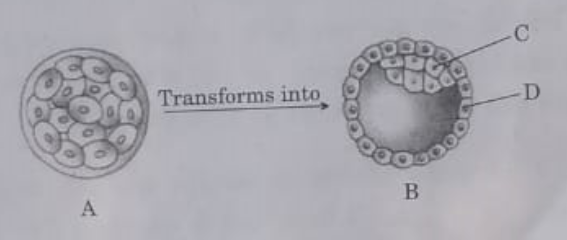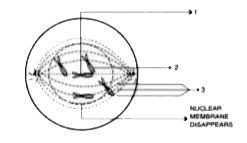Early embryonic stage that follows blastula is
Morula
Amphiblastula
Radula
Gastrula.
The correct Answer is:D
To solve the question regarding the early embryonic stage that follows the blastula, we can break it down into the following steps:
Step 1: Understand the Blastula Stage
The blastula is an early stage of embryonic development characterized by a hollow ball of cells. It typically consists of about 64 cells and contains a fluid-filled cavity known as the blastocoel.
Hint: Remember that the blastula is a hollow structure formed after several rounds of cell division.
Step 2: Identify the Next Stage
After the blastula stage, the next significant stage in embryonic development is called gastrulation. During gastrulation, the cells undergo extensive movement and rearrangement, leading to the formation of the gastrula.
Hint: Look for the process that involves the formation of germ layers, which is a key feature of the next stage after the blastula.
Step 3: Differentiate Between Other Options
- Morula: This is the stage that precedes the blastula, consisting of about 16 cells.
- Amphiblastula: This is not an embryonic stage; it is a larval stage found in sponges.
- Radula: This is not related to embryonic development; it is a feeding structure found in some mollusks.
Hint: Eliminate options that do not fit the context of embryonic development stages.
Step 4: Conclusion
Based on the understanding of the developmental stages, the early embryonic stage that follows the blastula is the gastrula.
Final Answer: The early embryonic stage that follows the blastula is the gastrula.
The blastula is an early stage of embryonic development characterized by a hollow ball of cells. It typically consists of about 64 cells and contains a fluid-filled cavity known as the blastocoel.
After the blastula stage, the next significant stage in embryonic development is called gastrulation. During gastrulation, the cells undergo extensive movement and rearrangement, leading to the formation of the gastrula.
- Morula: This is the stage that precedes the blastula, consisting of about 16 cells.
- Amphiblastula: This is not an embryonic stage; it is a larval stage found in sponges.
- Radula: This is not related to embryonic development; it is a feeding structure found in some mollusks.
Based on the understanding of the developmental stages, the early embryonic stage that follows the blastula is the gastrula.
Topper's Solved these Questions
Similar Questions
In embryonic stage, cells are
View SolutionFind out the correct sequence of haemopoietic tissues from early embryonic stage, after birth and an adult stages is:
View SolutionAssertion: In gene therapy of SCID, a patient requires periodic infusion of genetically engineered lymphocytes
Reason :If the ADA gene is introducted into cells at early embryonic stage, it could be a permanent cureView SolutionName the embryonic stage that gets implanted in the uterine wall of a human female.
View SolutionBlastula lacks
View SolutionThe embryonic stage with outer layer trophoblast and inner cell mass attached at one region of the trophoblast is
View SolutionStudy the given diagram: A is an embryonic stage that gets transformed into B, which in turn gets implanted in the endometrium in human females.

(a) Identify A, B and its parts C and D.
(b) Stage the fate of C and D in the course of embryonic development in humans.View Solutiona) Why does endosperm development precede development in angiosperm seeds? State the role of endosperm in mature albuminous seeds.
b) Describe with the help of three labelled diagrams the different embryonic stages that include mature embryo of dicot plants.View SolutionAll chordates have
(a) Notochord in adult stage
(b) Solid nerve cord during embryonic stage
(c) Triploblastic nature
(d) Dorsal heartView SolutionGiven below is a diagram representing a stage during mitotic cell division in an animal cell:

Name the stage that follows this stage of mitosis. How can this stage be identified ?View Solution

